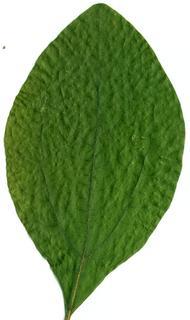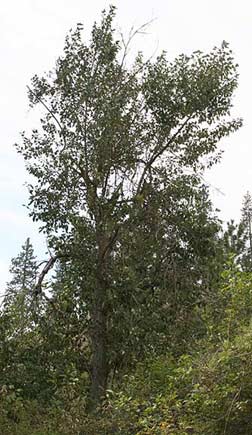Specifically looking at tree leaf identification in the Easter Region of the North America, there are over 350 different Species.
Many of these trees are indigenous, though some have been introduced from other continents.
When aiming to identify a tree, it is often helpful to have more than just the leaf to look at, notes on leaf characteristics, bark characteristics, size, form, habitat, seeds, flowers etc. will all help in the identification process.
During fall, there are some stunning places, from where you can see the leaves turning to their fall colors.
People flock to the Blue Ridge Parkway in North Carolina, as one such location. From an elevated view, it is possible to see the mountains and valleys that make up the Southern Highlands and capture a truly memorable view.

From late September, Dogwood begins to turn deep red.

Alternate-leaved Dogwood (Cornus alternifolia)
Fairly common large shrub or small tree found primarily in the Mountains in North Carolina, rare in the Piedmont. Appropriately enough, it differs from other species of Cornus in having alternate leaves - all our other species are opposite-leaved. The leaf venation and flowers are similar to other dogwoods
Hickories follow with a bright yellow

Shellbark Hickory is very rare in North Carolina
The leaves are distictively large (over a foot long), normally with 7-9 leaflets. The nuts are very large, as you might guess from another of its common names: Kingnut.
with red maples adding more red to the scene.

One of our most common and familiar trees throughout North Carolina
Sassafras become a brilliant orange

Leaves deciduous, simple, petiolate, alternate, 6–15(–18) cm long, (2–)5–10 cm wide, obovate or oval or ovate, leaf margins entire, unlobed or shallowly lobed or moderately lobed or deeply lobed, palmately lobed, leaf lobes 1–3(–5) per leaf, leaf apices acute or obtuse, leaf bases cuneate. Leaf upper surface green, glabrous or glabrate. Leaf lower surface green, glabrous or glabrate or pubescent. Leaf venation palmate or pinnate. Petioles 1.9–3.8 cm long. Stipules absent.
and Oaks finish off the fall as they turn through red and brown.

Chestnut Oak
is a dominant tree of rocky hilltops and mountains in the Piedmont and Mountain regions of North Carolina.The leaves are evenly and bluntly toothed
With extensive Appalachian conifers maintaining a green backdrop all year round.
For more information on
tree leaf identification in the Eastern Region of North America, this is a great guide



















